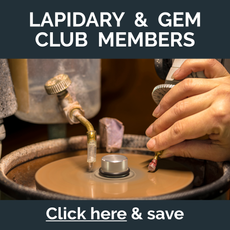Shop Now
- Warburtons Tool Kits
- Benches, Tools & Accessories
- Burs & Drills
- Casting & Melting
- Chains
- Cleaning
- Display
- Dust Extraction & Air Filtration
- FINDINGS - PEEKAYS
- Flex Shafts & Micromotors
- Forming
- Gemmological
- Gemstones
- Gift Voucher - Warburtons
- Jewellery Bead & Pearl
- Lapidary
- Lighting & Photography
- Magnifiers
- Mass Finishing
- Measuring: Gauges & Scales
- Metal: Sheet, Wire, Tube, Testing
- Microscopes
- Permanent Jewellery
- Plating, Colouring & Patinas
- Polishing & Abrasives
-
Presentation Packaging
- Carry Bags
- Carry Bags - Custom
- Deluxe Boxes
- Economy Jewellery Boxes
- Flock Boxes
- Imitation Leather
- Jewellery Pouches
-
Leatherette Jewellery Boxes
- Cufflink Box
- Gold Corner Earring Box
- Gold Corner Pendant Box
- Gold Corner Ring Box
- Gold Line Bangle Box
- Gold Line Bracelet Box
- Gold Line Earring Box
- Gold Line Necklace Box
- Gold Line Pendant Box
- Gold Line Ring Box
- Leatherette Bangle Box
- Leatherette Bracelet Box
- Leatherette Double Ring Box
- Leatherette Earring Box
- Leatherette Long Bracelet Box
- Leatherette Multi Box
- Leatherette Necklace Box
- Leatherette Pendant Box
- Leatherette Ring Box
- Silver Corner Earring Box
- Silver Corner Pendant Box
- Silver Corner Ring Box
- Plastic Bags & Shipping Boxes
- Repair Envelopes
- Ribbon
- Supplementary Parts
- Wood Jewellery Boxes
- Monthly Specials
- Clearance
- Reference Books, DVDs & Templates
- Safety
- Sandblasting
- Setting & Engraving
- Soldering & Welding
- Watchmakers
Natural vs Synthetic Diamonds
With the status of each diamond affecting valuation, it’s important for jewellers to be able to determine the difference between synthetic and natural diamonds. Also known as man-made, lab-grown or cultured diamonds, synthetic diamonds are chemically and physically no different from their geologically-formed counterparts. Diamond synthesis has been possible since the 1950s, and decades of research and development has seen the processes refined further and further. While technically ‘real’ diamonds, they can be distinguished from natural diamonds with specialised jewellery tools and applied knowledge.
There are two main processes for creating synthetic diamonds: HPHT (High Pressure High Temperature), and CVD (Chemical Vapour Deposition), and gems made this way should not be confused with diamond simulants. Simulants are distinct from synthetics in that they are made from non-diamond material, and are therefore not real diamonds. Synthetics, on the other hand, fast-track the natural geological process to create a product virtually identical to the real thing!
Introducing the GemPen
The GemPen from Geometrics is a powerful, portable gemological instrument for modern jewellers and gemologists to screen various gems for synthetics and treatments. Founded in 2015 in Luleå in northern Sweden with the vision to “assure safe global trading of gemstones”, Geometrics have been providing solutions to the entire gemstones value chain since their inception. True to this vision, the GemPen is a game changer.
This pocket-sized tool, around 24cm in length and weighing in at just over 400g, is perfect for screening gems in the field while meeting clients, and will work with stones of any size. The rechargeable battery negates the need for a permanent work station and allows the GemPen to be taken anywhere. The battery life is approximately one hour with continuous use, and recharge time is around 4-5 hours.
Where diamond testers work by distinguishing diamonds from simulants, the GemPen will give an indication whether the subject is a natural, synthetic or treated diamond. The GemPen works by utilising unique combinations of Xenon-UV-wavelengths and filtering, provoking a variable fluorescences in gemstones. By analysing this effect, the GemPen can give results instantly. The GemPen can distinguish naturals and synthetics, and can also identify certain treatments, such as glass fillings, heat, beryllium, cobalt, HPHT colour treatment and irradiation. The GemPen does not substitute diamond testers, but rather complements them.
The results from the GemPen are indicative, not conclusive, and it is up to professional gemologists to interpret results. Users can consult the following information for help interpreting results: GemPen Test Tree, GemPen Fluorescence Colour Map, GemPen Diamond Map, and GemPen Gemstone Map.
To find out more about the GemPen and to view video tutorials, visit geometrics.com
To view our range of GemPen products as well as other Gem Testing tools and equipment, click here.


